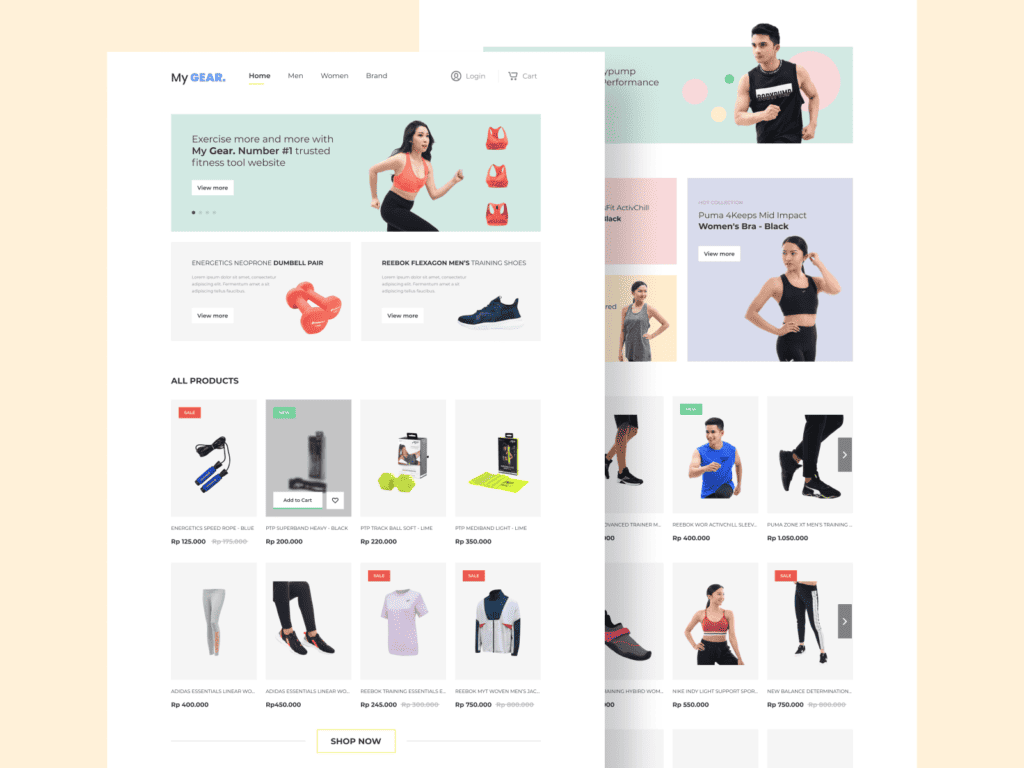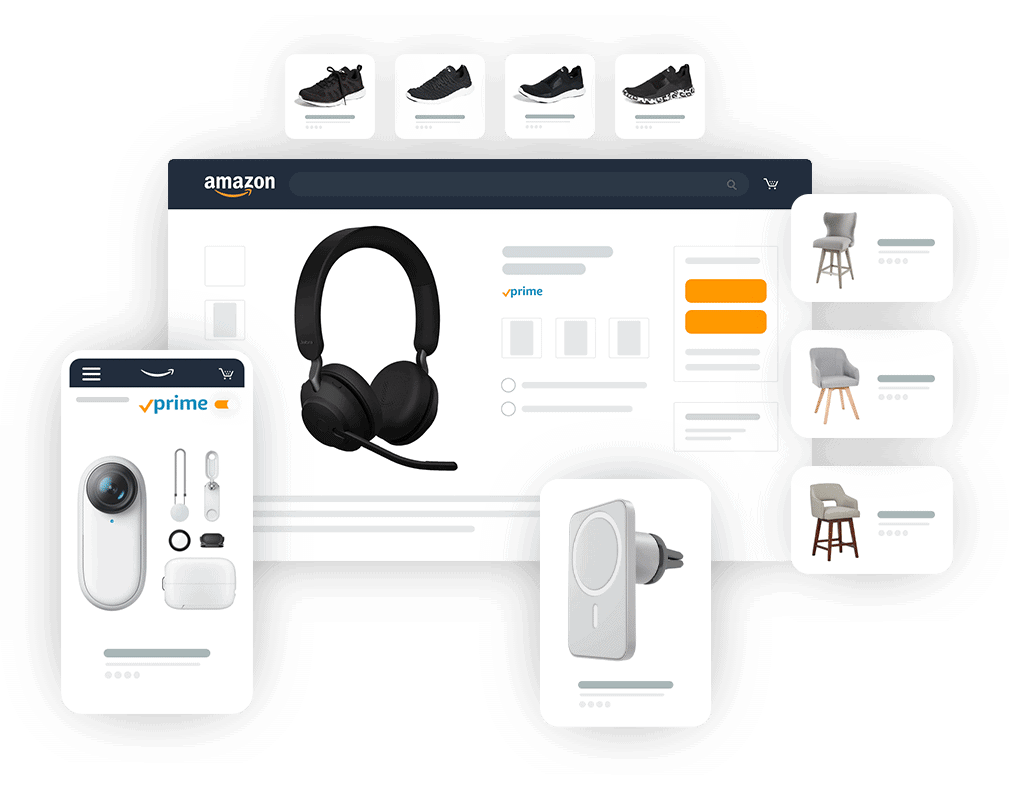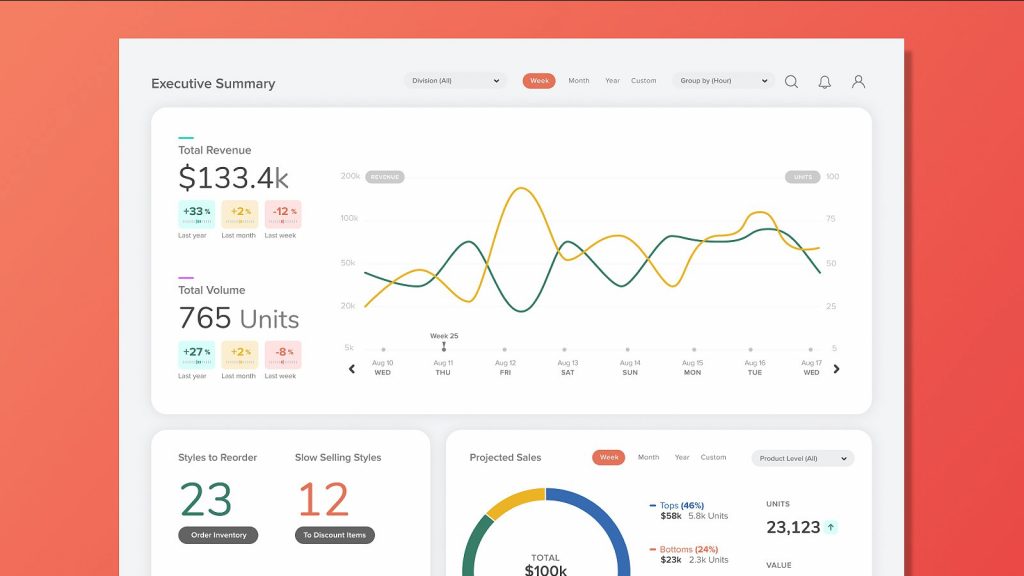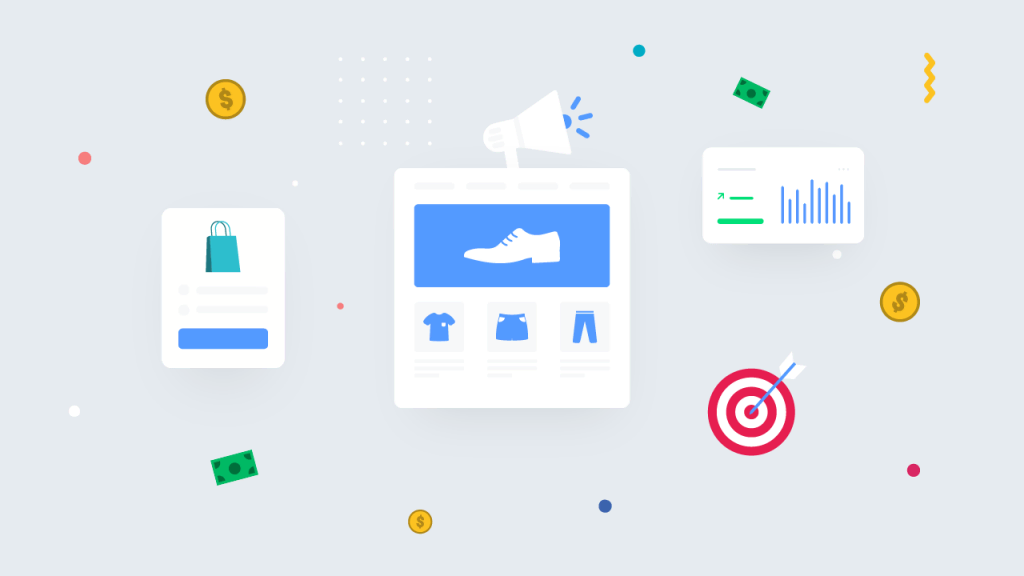eCommerce Website Development: Creating an Online Store from Scratch
Have you ever dreamed of starting an online business and selling products or services through a custom-built eCommerce website? As digital technology advances in leaps and bounds, eCommerce presents a tremendous opportunity for entrepreneurs and small business owners like yourself. However, developing an effective eCommerce website requires thoughtful planning, technical skills, and a customer-focused mindset from the very beginning.
This comprehensive guide will review the essential steps and best practices to launch a successful online store from scratch. Whether you want to sell physical products, digital downloads, subscription services, a Play Store apk download or a combination of offerings, this article will equip you with the knowledge to turn your eCommerce dreams into reality. Let’s get started!
Table of Contents
Selecting an eCommerce Platform

The foundation of any eCommerce website is the underlying platform that powers it behind the scenes. Leveraging one of many proven eCommerce platforms and solutions is wiser than building your online store entirely from scratch. The platform will provide the core functionality, tools, and support to get your store up and running while letting you customise the look and feel.
Key eCommerce Platform Options
When evaluating eCommerce platforms, the main options include:
- Platforms like Adobe Commerce, WooCommerce, or PrestaShop. These offer maximum flexibility and customisation since you download and host the platform. However, they require more technical skills to set up and manage.
- SaaS (Software-as-a-Service) platforms like Shopify, BigCommerce, or Volusion. The service provider maintains These hosted solutions, making them quick and easy to set up. However, they offer less back-end control compared to open-source.
- Enterprise platforms like SAP Commerce Cloud or IBM WebSphere Commerce. Feature-rich solutions for large B2B and B2C stores, but quite complex and expensive.
When weighing the choices, open-source vs SaaS often comes down to a tradeoff between control and convenience. When choosing an eCommerce platform, consider your technical capabilities, budget, and business needs.
Key Evaluation Criteria
Consider these vital criteria when selecting an eCommerce platform:
- Features. Assess built-in functionality like cart/checkout, payments, shipping, promotions, inventory management, reporting, etc. Ensure needed features are supported out-of-the-box or with add-ons.
- Scalability. Can the platform quickly grow with your business in terms of traffic volume, product catalogue size, sales transactions, etc.?
- Performance. Platform speed and reliability are vital for both customers and search engine optimisation.
- Security. Robust security protections, compliance capabilities, and data protection are essential.
- Customisation. To what degree can you tailor the storefront design, layout, functionality, etc?
- Cost. Carefully evaluate upfront and ongoing costs like license, add-ons, transaction, storage, etc.
- Support. What technical help resources, documentation, communities, and professional services are available?
Choosing the right platform moves your eCommerce project in the right direction from step one.
Designing and Building Your Online Store

Once an eCommerce platform is selected, you can shift focus to designing, building out, and customising your unique online store. Both the back-end admin interface and front-end customer-facing website require careful attention to create a polished, user-friendly experience.
Store Design Best Practices
Whether handling design in-house or collaborating with an agency, incorporate these best practices:
- Mobile-friendly – Optimise both design and performance for smartphones and tablets. Google requires a mobile-friendly site now.
- Intuitive navigation – Allows shoppers to explore products easily, view details, access the cart & checkout, and find helpful information.
- Compelling product visuals – Showcase products attractively with high-quality images, videos, 3D models, etc. Allow image zooming.
- SEO optimisations – Craft descriptive page titles and meta descriptions. Ensure site architecture and URLs are search engine-friendly.
- Trust symbols – Display security badges, customer ratings/reviews, business verification, satisfaction guarantees, etc. Help build credibility.
- Clear CTAs – Use effective calls-to-action to guide visitors to desired actions like “Add to Cart” or “Buy Now”.
Paying attention to details like these makes a difference in converting site visitors into paying customers.
Developing Product Catalogues

The product catalogue serves as the “bread and butter” of any eCommerce store. You won't get far without an enticing collection of items to peruse and purchase! Use these tips to populate your online shelves with in-demand products.
Creating Excellent Product Listings
Each product in your catalogue requires a detailed page highlighting vital information to compel browsers to buy it. Essential elements include:
- High-quality product images/video
- Descriptive, SEO-optimised title & description
- Pricing & sales data
- Variant options – size, colour, style, etc
- Inventory availability status
- Detailed product specifications & attributes
- Customer ratings/reviews section
- Complementary/related product suggestions
- Transparent add to cart or buy now CTA
Putting care into crafting stellar product listings pays dividends once your store goes live. You only have one chance to make a great first impression!
Managing Inventory
Don’t overlook the importance of inventory management for tracking product availability across single or multiple sales channels:
- Link eCommerce platform to inventory system
- Update inventory levels as items sell
- Prevent overselling with backorders or notifications
- Optimise reorder points to prevent stockouts
- Sync inventory data between online/ brick-and-mortar stores
Maintaining accurate, real-time inventory visibility enhances customer experience and protects profit margins. Out-of-stock directly translates to lost sales opportunities.
Expanding Your Catalogue
Focus energy on your core product line before expanding into additional categories. As you grow, a more comprehensive catalogue provides more purchase options and incentives for customers to revisit your store. Ways to diversify include:
- Complementary product lines that align with your brand
- Bundling existing products into kits or packages
- Dropshipping goods fulfilled directly by wholesale suppliers
- Private-label or custom-manufactured products
Just keep your catalogue manageable beyond your ability to manage it efficiently!
Optimising the Shopping Experience

Beyond store design and product selection, use other touchpoints to optimise customers' shopping experience. Going the extra mile here reduces friction in the purchasing process and encourages higher conversions.
Streamlining Checkout
The checkout process is truly make-or-break. Even the slightest inconvenience will cause many customers to abandon their carts. Tactics to enhance checkout include:
- Guest checkout – Don’t require account creation just to purchase.
- 1-page checkout – Avoid forcing customers through multiple complex pages.
- Auto-complete – Store registered profiles/payments to fill automatically.
- Progress indicator – Display multi-step progress to completion.
- Payment options – Support popular options like cards, PayPal, and Apple/Google Pay.
- Allow easy voucher or coupon redemption.
Checkout best practices dramatically impact checkout completion and customer satisfaction metrics. Treat it as a top priority.
Personalising the Experience
Leverage personalisation to make customers feel valued, understood, and catered to:
- Display dynamic messaging by name after login or first purchase
- Recommend products based on interests or prior shopping behaviour
- Allow customers to bookmark or favourite items to revisit later
- Send triggered emails like abandoned cart reminders or replenishment notices
- Provide a self-service account dashboard to manage preferences
Personal touches demonstrate you aim to understand each shopper's unique needs, not only make a quick sale.
Offering Support
Even with optimal site design and streamlined checkout, customers will still have questions or encounter issues needing support:
- Provide self-help options like knowledge bases, FAQs, forums
- Maintain multiple contact options – email, call centre, chat
- Staff knowledgeable agents to resolve issues promptly
- Offer conveniences like free returns or no-quibble guarantees
- Automatically notify customers of order/shipping updates
- Seek feedback via surveys about the shopping experience
Proactive customer support protects your reputation and repeat business. Don’t leave shoppers hanging when problems arise!
Driving Traffic and Promoting Your Store

Now that your unique online store is ready to handle a rush of eager customers, exploring proven techniques to drive visitors to your site becomes the following strategic priority.
SEO Techniques
Ranking well in search engines like Google remains vital for eCommerce discovery:
- Research relevant target keywords related to products, categories, and brand terminology.
- Optimise pages and content for selected keywords, focusing on informational intent.
- Generate inbound links from industry websites through partnerships and outreach.
- Producing regular helpful blog content establishes domain authority over time.
- Technical optimisations like site speed, security, and infrastructure also boost rankings.
SEO requires patience, but it earns free organic traffic forever once it is established.
PPC Advertising
While slower to gain steam, pay-per-click ads offer instant exposure:
- Run Google Ads eCommerce Shopping campaigns to showcase products dynamically.
- Advertise popular categories or branded keywords on the Google Search Network.
- Retarget visitors who have already engaged with the site across the web via the Google/Facebook network.
- Create display ads focused on reach rather than conversions to amplify brand presence.
Meticulously manage bids and budgets; otherwise, PPC costs eat rapidly into margins.
Social and Email Marketing
Leverage digital communications channels to connect with customers:
- Share product news, launches, and promotions on Instagram, Facebook, and Pinterest.
- Collect email subscribers to distribute targeted offers via newsletter campaigns.
- Collaborate with brand ambassadors and influencers to expand reach.
- Follow up with customers post-purchase via transactional and behavioural emails.
Communicate consistently valuable, not overly promotional, content that engages subscribers.
Offline Marketing Tactics
Don’t neglect offline options to drive local or hyper-targeted traffic:
- Print catalogues, flyers or coupons to distribute in communities.
- Sponsor events or tradeshows aligned with your customer demographic.
- Advertise in niche publications – magazines, newspapers, etc, catering to your vertical.
- Leverage radio and television ads to convey brand messaging and offers.
- Embrace grassroots word-of-mouth marketing.
Sometimes, old-fashioned marketing still packs a punch! Blend both digital and traditional approaches.
Analysing Performance and Results

The final imperative piece involves monitoring key metrics to gauge your eCommerce program’s health and continuously fine-tune strategy:
- Traffic – Sessions, visitors, page views, channels, locations
- Acquisition – Bounce rate, pages/session, channel cost/ROI
- Behavior – Page depth, click-through rate, funnel steps completed
- Outcomes – Browse abandonment, add to cart rate, conversion rate
- Retention – Repeat purchase rate, customer lifetime value
- Products – Sales, revenue, margins, ratings by category
- Customer Service – Response time, ticket volume, resolution rate
Lacking visibility into performance makes improving difficult. Tap into analytics!
Optimising Based on Insights
Combining analytics data with real-world observations of customers provides a wealth of optimisation opportunities:
- Improve confusing site pages showing high bounce rates
- Fix checkout pain points revealed by excessive cart abandonment
- Boost product discoverability for best-selling items
- Refine PPC bids based on high/low converting keywords
- Retarget customers showing interest but not converting
- Spot high-revenue product lines to double down on
Continual testing and tuning over time leverage insights into greater success.
Final Thoughts
As we’ve explored in detail, developing a custom eCommerce website certainly qualifies as a complex undertaking but dramatically simplifies reaching customers globally. Your passion, patience, and dedication to mastering the critical ingredients outlined above will determine whether your online store struggles or thrives. From flexibly showcasing products to facilitating seamless transactions to providing exceptional service, customers expect flawless execution.
Although competition grows fiercer yearly, plenty of room remains for fresh eCommerce concepts catering to underserved markets. As technology progresses, the barriers to entry only lower over time. Turn your ideas into reality by leveraging the strategies covered throughout this guide. The only limit rests with your willingness to learn essential concepts and commit fully until you reach sustainable success. After all, booming eCommerce empires like Amazon and Shopify started from humble beginnings before catching fire.
Ready to get working on your eCommerce dream? Roll up your sleeves, dig in by taking things step-by-step, and push forward until that first sale comes through. I wish you the very best as you embark on this exciting journey!
eCommerce Website Development FAQs
What are the first technical steps to building an eCommerce site?
The first technical steps are: 1) Register a domain name; 2) Set up hosting on a web server or leverage a SaaS platform; 3) Install/configure your eCommerce platform software; 4) Connect a payment gateway. You can begin creating product listings and customising the site with these basics.
How much does it cost to develop an eCommerce website?
Costs vary dramatically based on site complexity, custom designs, inventory size, traffic volume and other factors—however, budget anywhere from $5,000 – $100,000+ for a professionally built custom online store. Opting for an off-the-shelf SaaS solution instead cuts costs substantially.
What are some proven techniques to boost online sales?
Some top techniques for increasing eCommerce sales are offering free shipping thresholds, implementing 1-click checkout, showcasing product rating/reviews, capturing emails pre-checkout to retarget, personalising the experience for each user, displaying security badges to build trust, following up post-purchase via email, and more.
What tools are available for managing inventory?
Top inventory management software tools include TradeGecko, Cin7, Brightpearl, Zoho Inventory, and Fishbowl. Many eCommerce platforms also include built-in basic inventory tracking. Integrating an advanced solution centralises multichannel visibility and expands functionality.
How important is site speed for eCommerce success?
Incredibly important! Faster-loading sites demonstrate higher visitor engagement, lower bounce rates, greater SEO rankings, and increased revenue. Even an improvement of just 1-second leads lifts conversions dramatically. Invest in speed optimisation through site hosting, CDNs, caching, image compression, lazy loading, and code streamlining.

Your blog is absolutely fantastic! Lot of great information which is very helpful